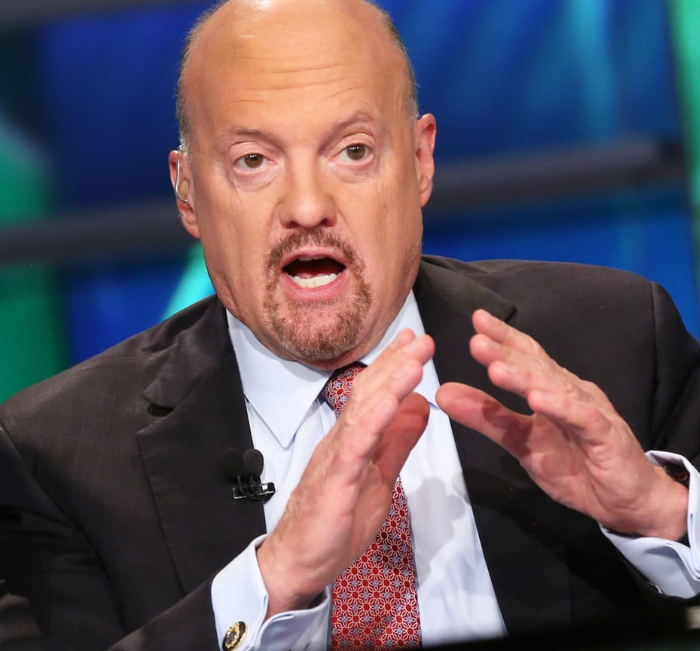Today’s issue of the WC is all about controversial businesses or business models. Is the ick worth the IRR?
Today, we’ve got:
Let’s go.
Table of Contents
Lab-Grown Meat
Opposition to lab-grown meat has done something only coming out against puppy murder has managed in 2024: Unite the left and right sides of the American political divide.
Pains me deeply to agree with Crash-and-Burn Ron, but I co-sign this.
— Senator John Fetterman (@SenFettermanPA) May 2, 2024
As a member of @SenateAgDems and as some dude who would never serve that slop to my kids, I stand with our American ranchers and farmers. 🇺🇸 pic.twitter.com/zZLYf8t5lI
While it unites those who take lobby dollars from Big Cow, Americans are divided on the idea.
From my daily equities newsletter, Stocks and Income:

No matter what you think of it, interest in lab-grown meat is clearly picking up.

And it’s popular in parts of the US that you wouldn’t necessarily expect:

Maybe these are all ranchers trying to learn more about the technology that may put them out of business, but that doesn’t seem likely.
Proponents of lab-grown meat say it’s a sensible and safe way to enjoy BBQ without all the downsides of raising and slaughtering animals.
Opponents say it’s comparable to GMOs and will destroy the ranching industry. And icky.
Regardless, I think everyone can agree it would be cool to eat a Wooly Mammoth burger.
By the way, if you’re worried about how lab-grown meat is produced
btw, this is the thing that makes lab meat pic.twitter.com/4GZIt4SnNN
— Senator John Fetterman (@SenFettermanPA) May 3, 2024
You really don’t want to know how real meat is produced.
Would you like to learn more?
- Clean Meat: How Growing Meat Without Animals Will Revolutionize Dinner and the World (book)
- All about Lab-Grown Meat (book)
- Cultivated Cuisine: The Future of Lab-Grown Meat (book)
I’ve added them all to my curated bookshop.
Collectable goes from bad to weird
Ok, so last week, I showed you things aren’t looking good over at Collectable.
After more digging, things are going from bad to weird.
The first thing to say is that several notes via Twitter, LinkedIn, and their [email protected] emails have gone unanswered. My creepy Hubspot plugin tells me the email was opened at least, but there has been no response.

Second, we discovered why trading on Collectable was halted: They didn’t file their accounts on time.

Which then (third, if you’re scoring at home) also possibly explains why Jarod Winters left all six of his jobs:

They’ve replaced him with Adeliza Perez-Johnson.
In addition to being a well-regarded concierge in NYC, she’s also Phil Neuman’s personal assistant.
Phil bought Collectable for $1,353,000 in 2023. (The company originally raised more than $5 million.)
Speaking of New York, Collecable has moved offices (thing the fourth)!
This is their new office.

So what’s next?
The SEC filing theoretically means trading might resume at some point if they get their accounts sorted. I don’t know how much experience Ms. Perez-Johson has with that, but perhaps she’ll pull it off. Or perhaps I’ve got the wrong person. I’ve messaged her on Facebook.
I’ll try calling the phone number if I have nothing better to do.
If anyone walks past the Manhattan building, please stop in to see what you can learn.
I want my $40 back.
Would you like to learn more?
- Bad Blood: Secrets and Lies in a Silicon Valley Startup (book)
- The Smartest Guys in the Room: The Amazing Rise and Scandalous Fall of Enron (book)
I’ve added them to my curated bookshop.
Privatising Autism Treatment

Longtime readers of the WC may not be shocked to learn I’m autistic.
I was diagnosed about two months ago, and knowing that about myself has changed the way I look at the world — and probably a bit how the world looks at me.
When I received my diagnosis, I recalled the fate of the Center for Autism and Related Disorders (CARD), once the largest autism treatment company in the US.
The gist:
- 2018: In May, CARD was acquired by Blackstone, one of the world’s biggest private equity firms, for a reported $600 million.
- 2019: CARD’s founder, Doreen Granpeesheh, stepped down as CEO, saying she regretted selling to Blackstone.
- 2021: Despite continued growth in the demand for autism services nationally, CARD faced operational and financial challenges. By May 2022, only half of CARD’s clinics were operating profitably, and the organization risked running out of cash within months.
- 2022: On August 15, CARD exited Oregon, leaving patients without care as other clinics’ waitlists became overloaded. This decision was part of a broader downsizing strategy as the company was also shutting clinics in Michigan, Missouri, and Rhode Island, eventually leaving 10 of the 23 states it had been operating in.
- 2023: In June, CARD filed for bankruptcy in Texas. Court filings revealed a loss of $82 million in the 12 months ending in April 2023, with accumulated debt amounting to $245 million. Doreen Granpeesheh, who still retained a stake in CARD, repurchased the company, or what remained of it after further clinic sales, for less than 10% of the valuation Blackstone had paid.
Why was Blackstone so interested in CARD?
Since 2000, autism awareness and the market size for autism services have grown exponentially in the U.S.
- The prevalence of autism diagnoses has increased, with current figures estimating about 1 in 36 children in the U.S. being diagnosed with autism spectrum disorder.
- This increase in diagnoses has paralleled a substantial expansion in the autism services industry, including applied behavior analysis (ABA) therapy.
- State mandates requiring insurance coverage for ABA have also contributed to the sector’s growth.
So, how can a PE-backed company go broke with a demand curve that looks like this?

Covid was certainly part of it, but it’s the same old PE story for the most part:
- Too much debt – Blackstone doubled its debt to $245 million.
- Managers who didn’t know the industry – Blackstone brought in their own–cheaper– managers who didn’t know the ins and outs of either autism or medical accounting. Every state has different rules about insurance, Medicaid, and other reimbursements, and Blackstone couldn’t figure out how much to charge or get paid.
- Expanding too quickly – Maintaining an ideal therapist-to-client ratio became challenging as CARD expanded. Exceeding the recommended caseloads put extra stress on therapists and compromised the personalization and effectiveness of treatment.
There are lots of other reasons that I won’t bore you with. Smash reply for the full rundown.
When a wood laminates conglomerate or HVAC rollup goes under, it’s certainly a shame for investors who have lost their money and people who have lost their jobs, but it’s not the end of the world.
What happens when an organization providing necessary medical care disappears overnight?
What are the morals of that?
There are good reasons PE should get involved with healthcare:
- Investment and Growth: PE can inject significant capital into growing sectors such as autism, potentially expanding services and access to care.
- Operational Efficiency: PE firms aim to streamline operations, which, if done conscientiously, could lead to more cost-effective care delivery.
But there are more reasons not to do it:
- Profit over Care: Profit as the primary motive can lead to cost-cutting measures compromising patient care and employee conditions.
- Short-term Focus: PE firms often aim for rapid financial returns, which may not align with patients’ long-term care needs, particularly in sensitive fields such as autism treatment.
- Erosion of Quality: The pursuit of operational efficiencies and profit can result in overburdened staff, increased turnover, and a dilution of the patient-caregiver relationship essential for meaningful therapy.
In the case of CARD’s failure, patients and their families experienced significant disruptions in care, which, in the case of autism treatment, can lead to regression in behavioral and social skills — marriages can fall apart, and suicides aren’t uncommon.
Would you like to learn more?
- Ethically Challenged: Private Equity Storms Us Health Care (book)
- Private Equity at Work: When Wall Street Manages Main Street (book)
- Healthcare Disrupted: Next Generation Business Models and Strategies (book)
- Your Money and Your Life: Private Equity Blasts Ethical Boundaries of American Medicine (article)
- Private Equity Buyouts in Healthcare: Who Wins, Who Loses? (article)
I’ve added the books to my curated bookshop.
Egg Freezing
There’s a lot of money in freezing eggs. No, not these eggs. Human eggs.
An insane amount of money that leads to insane business models.
I’m going to talk about two different companies in this space and let you decide for yourself how you feel about it.
The best time to extract and freeze your eggs is when you’re young. But most people can’t afford the process at that time (more on that in a moment).
So, Cofertility will do it for you for free as long as you’re happy to give half your eggs away. The company then sells the eggs for $13,500 each to another aspiring parent. The company can usually secure around 20 eggs per harvest, selling half of the eggs immediately.
Donors and recipients decide together whether or not they want to communicate during the process and after the child(ren) is born.
So, the company is pulling in maybe $130k in revenue. What are the costs? I don’t know their margins, but this is what someone would expect to pay for the harvesting procedure:
- Initial Consultation and Pre-Cycle Testing: This can range from $200 to $500 for the initial consultation. Pre-cycle testing, which includes blood tests and an ultrasound to assess ovarian reserve, may cost between $1,000 and $3,000.
- Medication: The stimulation medications required for the process can be one of the most expensive parts, often ranging between $2,000 and $5,000, depending on the medications used and the dosage required.
- Egg Retrieval Procedure: The procedure itself typically costs between $5,000 and $15,000. This usually includes the costs for the medical team, anesthesiologist, and the facility.
- Storage Fees: After the eggs are frozen, an annual storage fee can range from $500 to $1,000 per year.
If Cofertility is paying retail (they’re not) to harvest the eggs, the upfront cost will be between $10k and $25k, plus maybe $5k for ten years of storage.
If I’m doing my maths right (unlikely), that means Cofertility is generating gross margins of something like 75% to 90%.
As we’ve just learned, fertility is expensive.
If you’re a woman getting pregnant with her own eggs, the upfront cost is something like $10k to $25k to harvest the eggs (see above).
Each IVF cycle adds to that (assuming her own eggs pulled out of storage):
- IVF Cycle Fee: This fee covers the core IVF treatment, including monitoring the development of follicles, egg fertilization with sperm in the laboratory, and embryo transfer to the mother’s uterus. Assuming the eggs have already been harvested, this fee primarily covers lab work, embryologist services, and the transfer procedure. The IVF cycle fee itself can range from $12,000 to $17,000.
- Thawing Process: The cost to thaw previously frozen eggs and prepare them for fertilization can range from $1,500 to $2,500.
- Additional Procedures: Depending on specific circumstances, additional procedures may be recommended, such as Intracytoplasmic Sperm Injection (ICSI) if there are known sperm quality issues ($1,500 to $2,500), Preimplantation Genetic Testing (PGT) to test embryos for genetic disorders ($3,000 to $5,000), or others like an embryo glue fee.
So, each session is around $25k, and most couples need several cycles to get pregnant — many never do.
If you’re buying an egg each time, add $13,500+ to each cycle.
Naturally, a company has sprung up to lend aspiring parents the money for as little as $200 per month.

I couldn’t dive into the process, but I suspect more of the loans are closer to 36% than 7%.
Sunfish is just the broker here. The loans themselves come from banks and other partners, of which there is no shortage.

I can only imagine how the loans are securitized and sold. Which tranche gets the AAA rating?
But Sunfish’s real innovation (also offered via partners) is their Gold IVF Success Program.

The program costs $1000 to join, and the main benefit is a refund if the IVF cycle doesn’t work. They say you can get up to 90% back, but that’s based on your likelihood of getting pregnant, so your mileage may vary.
For me, it’s desperately sad that anyone ever needs IVF, and it’s even more heartbreaking that they have to go into life-altering debt to do so — especially when results aren’t guaranteed.
Would you like to learn more?
- The Economics of IVF: Evaluating the Necessity and Value of Public Funding (article)
- The New Economics of Fertility (article)
- The Baby Business: How Money, Science, and Politics Drive the Commerce of Conception (article)
Sports Betting is Mainstream
Over the last five years, the sports betting landscape in the USA has transformed from a nascent, unevenly regulated space into a widely accepted and technologically advanced industry.
Legalization efforts have spread significantly, market participants have diversified, and the industry has seen technological innovations that have deepened engagement with bettors.
This evolution has not only increased consumers’ accessibility and options but has also presented new challenges in terms of regulation, problem gambling, and market saturation.
Let’s compare:
2019:
- Legalization: Sports betting was legal in a few states five years ago. This was a period shortly after the 2018 Supreme Court decision that overturned the federal ban on sports wagering, allowing states to legalize it if they chose.
- Market Entry: Fewer operators dominated the market, with early movers beginning to establish their presence.
- Regulation and Oversight: Each state that legalized sports betting crafted its own regulatory framework, leading to a patchwork of rules and tax rates across the country.
- Consumer Adoption: While growing, the number of people engaging in legal sports betting was still relatively small, as the industry was in its infancy in many states.
2024:
- Widespread Legalization: Most states have legalized sports betting in some form, vastly expanding the legal market and significantly increasing the number of legal bets made.
- Market Saturation: The market has seen a surge in operators, with a mix of domestic and international companies vying for market share. Technology platforms and mobile apps have become more sophisticated, offering live betting, streaming, and interactive features.
- Unified Efforts for Regulation: There’s been a push towards creating more unified regulatory standards across states to simplify the operational landscape for betting companies and improve consumer protection.
- Mainstream Acceptance and Partnerships: Sports betting has become more entrenched in mainstream culture, with numerous partnerships between betting firms, sports leagues, and teams. Media coverage of betting odds and betting-focused content is now commonplace.
- Technological Advances: Advanced analytics, machine learning for personalized betting experiences, and the integration of social features into betting platforms have enhanced the user experience.
Gambling is fun. I do it and enjoy it.
But it’s all about the money. Who’s winning?
- Flutter Entertainment/FanDuel: One of the largest online sportsbook operators in the US.
- 2023 revenue: $11.8 billion.
- DraftKings: A key competitor in the market, DraftKings has expanded its offerings and user base significantly since its inception.
- 2023 revenue: $3.7 billion.
- BetMGM: This joint venture has been aggressive in its market expansion strategies, often leading in market share in states where it operates.
- 2023 revenue: $2.0 billion.
- Caesars Entertainment: With a long history in the gaming industry, Caesars has effectively transitioned into the sports betting market, leveraging its brand and extensive network.
- 2023 revenue: $11.5 billion (includes non-sportsbook revenue).
“Total revenue from casino games, sports betting and iGaming reached $66.52 billion, a 10% increase over the previous record set in 2022.”
The numbers are comparable to alcohol and cigarette spending, both of which are legal for adults.
$66 billion is a lot of money filling state and local coffers, and people seem to enjoy it.
But nearly 3 million Americans enjoy it too much — they’re addicted to gambling, and there are all sorts of downsides to that, including a 15x higher chance of committing suicide.
What do you think? Is it worth it?
Would you like to learn more?
- The Economics of Sports Betting (book)
- Advances in Sports Economics (book)
- Economic Impact of Legalized Sports Betting (article)
- Compulsive Gambling – Symptoms & Causes (article)
That’s all for this week; I hope you enjoyed it.
Cheers,
Wyatt
Disclosures
- Our friends at Harvest Returns sponsored this issue.












